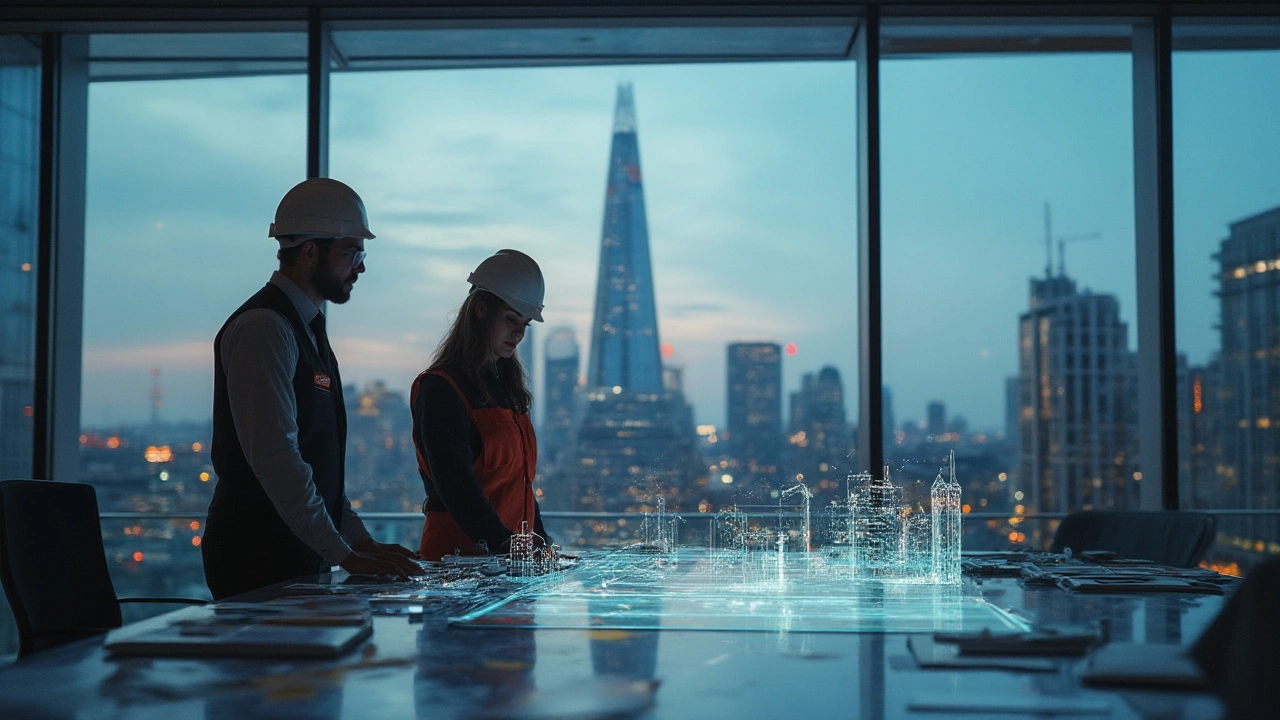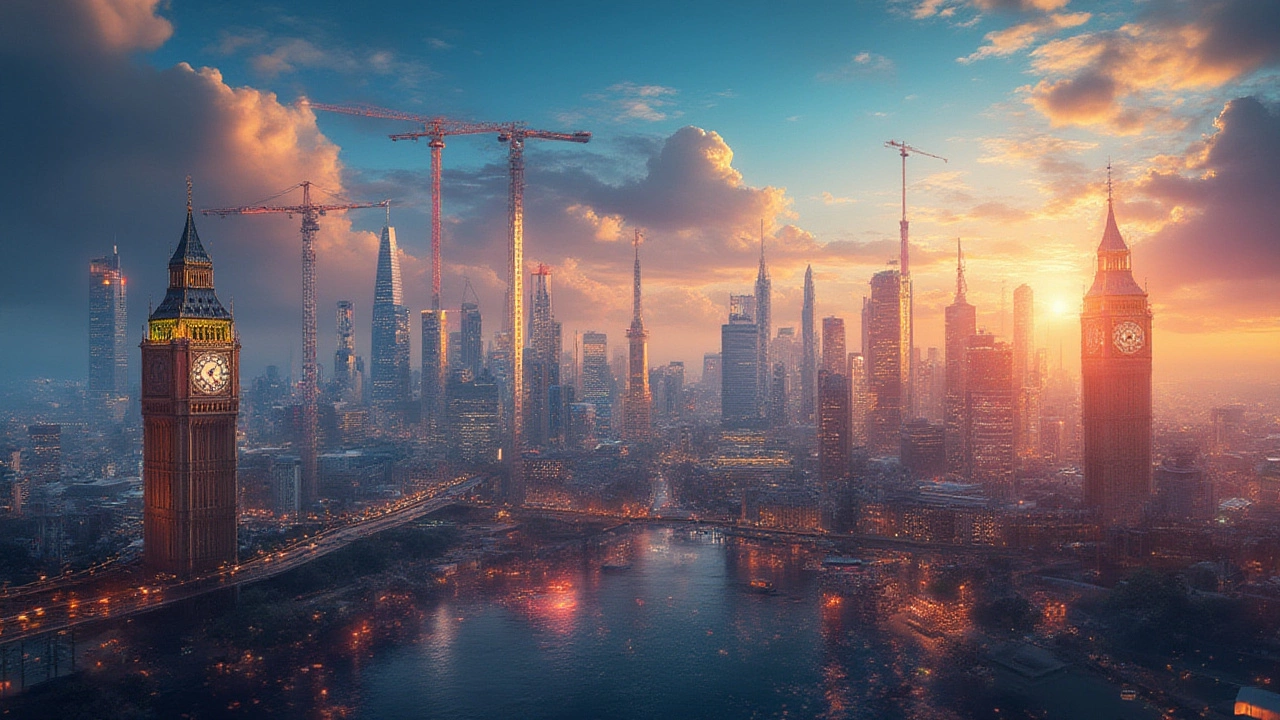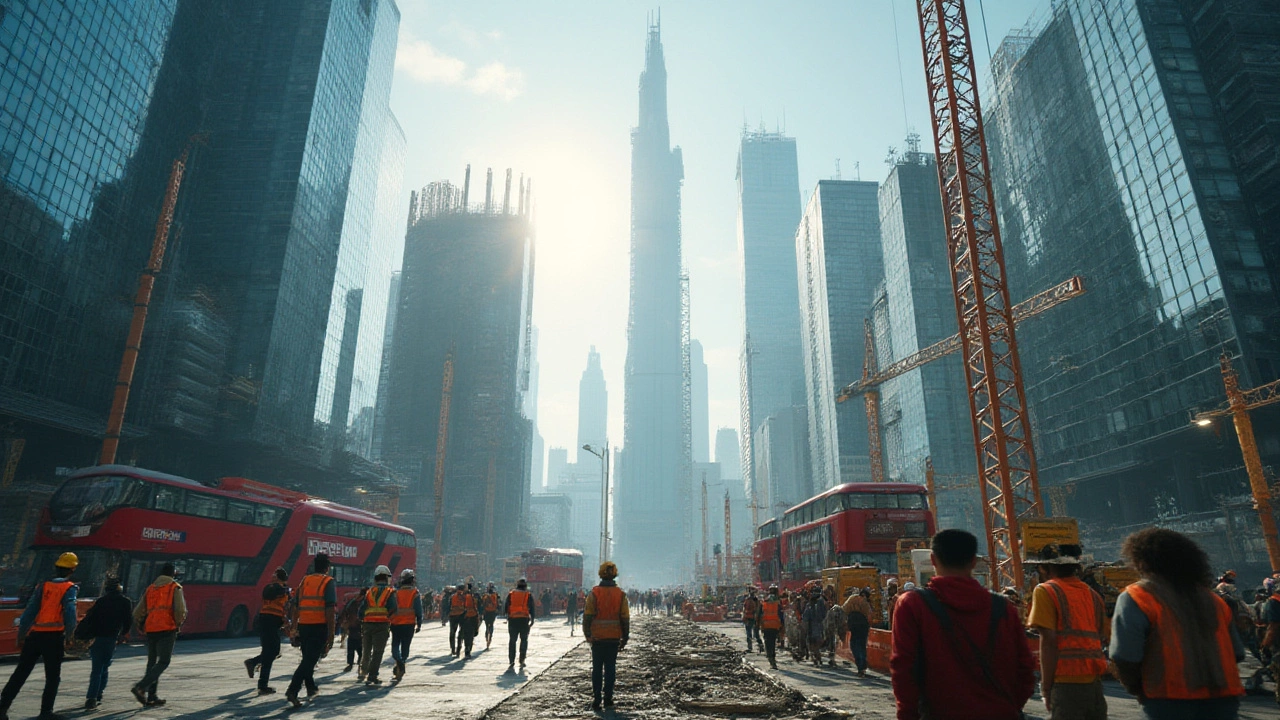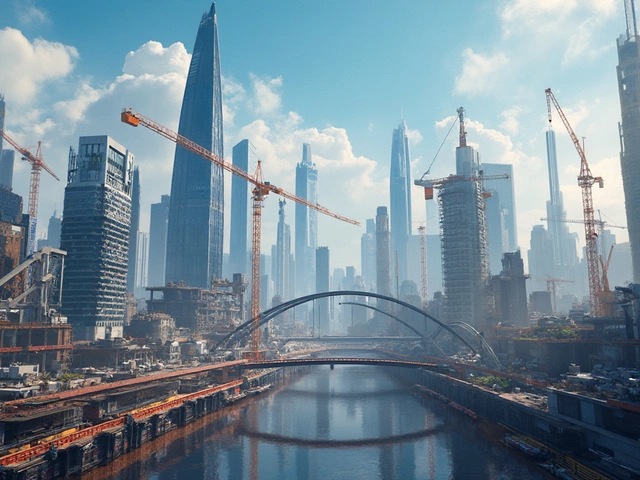If you want to know who really shapes the world—literally, with metal, stone, and grit—forget looking at old city monuments. The real giants today are construction companies running mega projects that don’t just outshine, they outscale entire cities. Not every firm can move mountains. But the top guys? They're building islands out of nothing, flipping desert sand into megacities, and making bridges that stretch so far you squint at the end. Let's break down who they are and what gives them this muscle in 2025.
What Makes a Construction Titan: How Size, Reach, and Projects Define the Leaders
Not all construction businesses can call themselves ‘the world’s best.’ Most people think just about profits, but that's nowhere near the full story. First up, you have to look at revenue, sure. But then, scan their track record—are they doing massive infrastructure, like airports or entire metros? Or are we talking hotels and medium towers? Only a handful of companies have the brains, the cash, and the manpower to make cities happen from scratch.
Back in 2024, the global construction market was worth over $12 trillion. To even make it into the top 10, a company had to handle yearly revenue north of $20 billion and have completed projects on at least four continents. It’s not just size, though. Reach matters: the best firms work everywhere—from Tokyo’s clean-line skyscrapers up to the deserts of the Middle East and tunnels under European mountains.Top construction companies also invest heavily in robotics, Green tech, and digital construction management. For example, China State Construction Engineering Corporation (CSCEC) added almost 8,000 robots on worksites by 2024—far outpacing every Western rival.
The balance shifts every year, but some names keep popping up: China’s ‘Big Three’ (CSCEC, CRCC, CREC), France’s VINCI, Spain’s ACS, and U.S.-based Bechtel. Some of these have been behind world records. The world’s longest sea-crossing bridge, Hong Kong–Zhuhai–Macau Bridge, was completed with CSCEC at the helm. VINCI, meanwhile, runs high-speed rail projects across Europe, and Bechtel’s fingerprints are on half the world’s nuclear plants and the Channel Tunnel. To get to this level, companies have to run projects that employ more than 100,000 workers and manage construction worth billions—often handling economies bigger than small countries.
Global presence is another sign of a titan. For example, while Skanska (from Sweden) dominates in Scandinavia, its projects in the U.S.—from hospitals in California to tunnels in New York—mean its teams clock more air miles than most airlines. These leaders don't just build—they reshape cities, influence migration, and shift the landscape for generations.
Check out this table with last year's key stats from the construction giants:
| Company | 2024 Revenue (USD) | Employees | Signature Project |
|---|---|---|---|
| CSCEC (China) | $297B | 368,000 | Hong Kong–Zhuhai–Macau Bridge |
| Vinci (France) | $67B | 273,000 | Grand Paris Express |
| ACS Group (Spain) | $39B | 120,000 | New Santiago Bernabéu Stadium |
| China Railway Group (CREC) | $183B | 290,000 | Beijing–Zhangjiakou Intercity Railway |
| CRCC (China Railway Construction Corp.) | $154B | 220,000 | Makkah Metro |
| Bechtel (USA) | $21B | 55,000 | Crossrail London |
| Skanska (Sweden) | $19B | 34,000 | Elizabeth River Tunnels |
| Bouygues (France) | $46B | 124,000 | Tour First Paris |
| Hochtief (Germany) | $30B | 34,000 | Elbe Philharmonic Hall, Hamburg |
| Powerchina | $87B | 132,000 | Karot Hydropower Project |
One handy tip: when checking if a company is really ‘top 10’ status, look not just for its revenue but for its global project footprint and the iconic builds. A flashy headquarters doesn’t mean much if you've never finished a global-scale job.

Meet the World’s 10 Biggest Builders in 2025: Names, Niche, and Game-Changing Projects
If you want to impress someone in the construction industry, just drop a few of these names. The world’s top 10 keep swapping rank depending on certain years and markets, but the main players in 2025? You’ll see a mix of European giants, U.S. powerhouses, and Chinese behemoths. Here’s a detailed look at who’s really sitting on the throne—and exactly why.
1. China State Construction Engineering Corporation (CSCEC) — The world’s largest construction company for years, CSCEC is behind some of the most jaw-dropping infrastructure in Asia and Africa. In 2025, they still outrun everyone, with signature projects like entire cities in Nigeria and skyscrapers in Shanghai popping up at warp speed. CSCEC leads in revenue, technology integration, and plain workforce numbers, deploying more than 368,000 staff.
2. China Railway Group Limited (CREC) — CREC is famous for their railways, obviously, but they also handle high-tech bridges, tunnels, and airports. Their ability to construct at insane speeds was proven when they built hundreds of kilometers of track in just a few weeks during last year’s emergency infrastructure push in Central Asia.
3. China Railway Construction Corporation (CRCC) — Not to be confused with CREC, CRCC focuses a lot on urban transit and overseas expansion. You’ll find their engineers working everywhere from African capitals to the deserts in the Middle East. Makkah Metro and deepwater ports are just two of their huge global contracts.
4. Vinci (France) — Vinci’s projects have a ‘built to last’ reputation in Europe. Their biggest recent claim to fame is the Grand Paris Express, a multibillion-dollar urban rail network that’s twice as complex as London’s original Underground. They’re also deep in renewable energy infrastructure around the world.
5. ACS Group (Spain) — If there’s a major infrastructure upgrade in Europe or Latin America, ACS is usually involved. They’re the force behind the jaw-dropping redesign of the Santiago Bernabéu stadium in Madrid and major highway upgrades across Brazil. Their reach is also digital, pioneering smart city integration into traditional builds.
6. Bouygues (France) — Bouygues may be best known in France, but their footprint covers urban megaprojects, sports venues, and transport nodes in Africa, the Middle East, and Southeast Asia. A cool recent tip: they now use 4D BIM (Building Information Modelling) on all megastructures—giving digital twins for every stadium and terminal they create.
7. Powerchina — If there’s a dam, bridge, or hydropower project in a remote spot, Powerchina is likely on the jobsheet. They make water possible where there was none before, turning deserts into liveable and farmable land. Their Karot Hydropower Project recently lit up entire valleys in Pakistan for the first time.
8. Bechtel (U.S.) — When you need extremely complex projects, like nuclear power plants, oil and gas mega-infrastructure, or massive rail tunnels, Bechtel is on everyone’s shortlist. They’re the only American player in the global top 10 these days, still riding high after delivering Crossrail London and expanding the Washington Metro.
9. Skanska (Sweden) — Skanska may have Scandinavian roots, but their eco-friendly methods have pushed their tendrils into the United States and U.K. infrastructure. From green hospital complexes in the Pacific Northwest to New York tunnels, they always push for climate-friendly engineering.
10. Hochtief (Germany) — A name respected for decades, Hochtief has a reputation for technical perfection and design innovation. Signature structures like the Elbe Philharmonic Hall prove they’re not just about concrete—they’re about world-class architecture, too. Their projects touch water, rail, and wind sectors alike.
Quick tip: If you’re comparing these big players for a project pitch, always ask about digital construction tools, safety records, and sustainability scores. These are the modern battlegrounds for the top dogs.

Surprising Realities, Smart Tips, and the Future of Mega-Construction
If you think these companies are just about putting up skyscrapers, you’re missing the larger picture. The world’s top construction firms double as tech companies—they’re pouring billions into artificial intelligence, drones, robotics, and modular construction. While numbers and big machines are cool, it’s really the data and design tools making them faster, safer, and greener.
Here’s something wild: According to the 2024 ‘Global Construction Review,’ nearly 30% of new megaprojects run on a hybrid model—using both robots and humans. This lets teams work 24/7, in all weather, at a precision level that humans can’t touch. CSCEC, for example, finished part of a 1400-km railway project with less than a 1-day delay per year by using AI-powered schedules and robot bricklayers who never need coffee breaks.
Want a pro tip? Watch how these companies invest in modular building—it’s a game changer. Skanska and Bouygues have entire sites dedicated to pre-building bridge sections and hospital wings in huge indoor warehouses, then trucking them into place and snapping them together like Lego. This sliced months off timelines and cut costs for hospitals in London and residential towers in Sydney.
Sustainability isn’t just PR-speak. Top companies have to cut carbon footprints to win megaproject deals, especially in Europe and the Middle East. Vinci runs almost every crane on biofuel at Grand Paris Express, Hochtief’s latest residential towers use up to 80% recycled steel, and Powerchina leads in water recycling in arid regions. For job seekers: if you have expertise in Green tech or digital construction management, there’s a gold rush happening at these firms in 2025.
Even more impressive, cyber-security has become a serious battleground. Bechtel faced a ransomware attack attempt in 2024—which did not stop work but pushed them to deploy even tighter controls. As everything goes digital, keeping plans secure is as critical as keeping workers safe in hardhats. Most of these companies now run entire software wings to defend blueprints and project data.
Here’s another tip for folks following the industry: Job mobility in the top 10 is global and demands adaptability. Fluency in a second language, willingness to relocate, and top skills in digital project management are your tickets in. As giants, they have training schools, international rotation, and offer insane networking potential. It’s not uncommon for a Skanska project manager to work in New York one year and Helsinki the next.
So, next time you pass a city-sized construction site, remember: you’re looking at the footprint of a global powerhouse shaping entire economies and skylines. These top 10 don’t just build—they create the backdrop for everything else happening in our world.





